Ever landed on a plumber’s website and wondered, “Gee, I’d love to hear about their founding in 1887”? Probably not.
When you visit a website, it’s because you have a problem that needs solving—like needing a new roof or unclogging a sink.
WHAT'S THE POINT OF AN ABOUT PAGE?
Surprisingly, your about page isn’t really about you; it’s about your customer.
Websites exist to solve problems for your customer. Period. Your about page needs to focus on your customer and their problem.
SAY WHY YOU GOT STARTED, NOT HOW
Too often, people dive into the history books of their business, detailing every step that brought them to today—from their humble beginnings in a garage to their recent merger with a main competitor. But here’s the truth: nobody cares about that—at least not initially. They're going to tune you out. They might be interested someday, but only after you’ve made their lives better.
How you got started isn’t relevant to your customer. Why you got started gets to the heart of their problem.
ALWAYS CIRCLE BACK TO THE SOLUTION
Remember, visitors only care about your story if you can solve their problem. Keep them engaged by empathizing with the issue they’re facing and assure them that you have the solution.
EXAMPLES

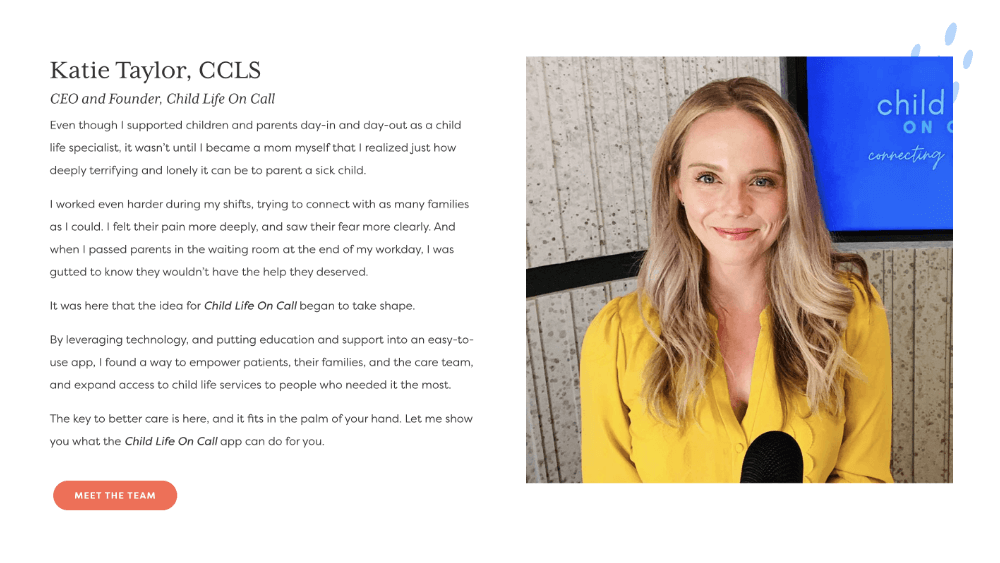
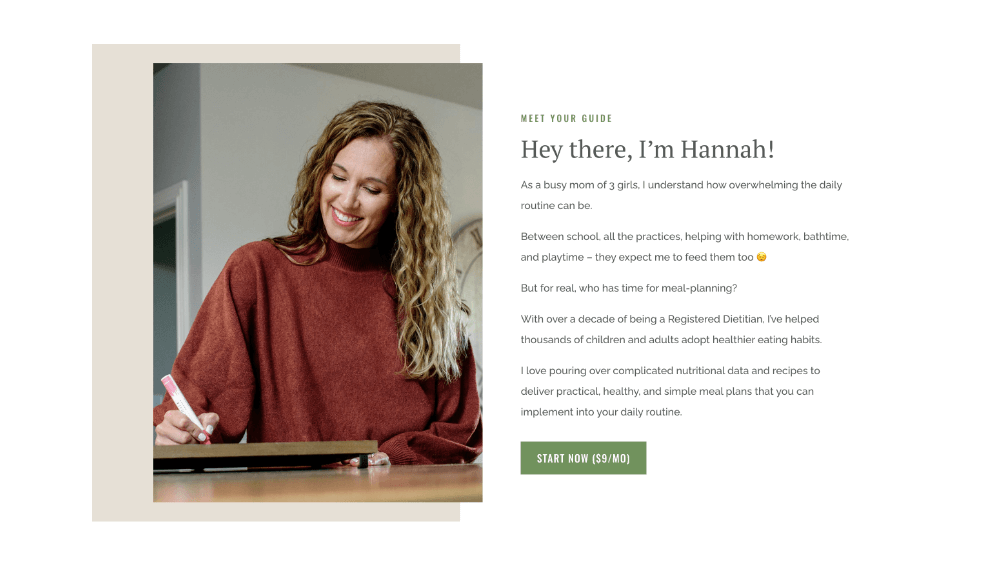
BACK IT UP WITH PROOF
While expressing your passion and commitment to solving the problem is crucial, customers need proof of your capability.
They know why your committed to their problem, now they want to know if they can trust you to solve it.
Here are some great ways to show your customer you have what it takes to solve their problem:
- Testimonials: Real stories from satisfied clients that illustrate how you've helped them overcome their challenges.
- Credentials: Highlight degrees, certifications, and industry affiliations that demonstrate your expertise and credibility.
- Statistics: Share quantifiable results you’ve achieved.
- Media Coverage: Articles, interviews, or videos featuring your work or expertise in reputable publications or platforms.
- Client Logos: Display logos of companies you've partnered with, indicating trust and recognition in your industry.
- Case Studies: Detailed examples of successful projects, outlining the problem, your approach, and the positive outcomes achieved for your clients.
EXAMPLES
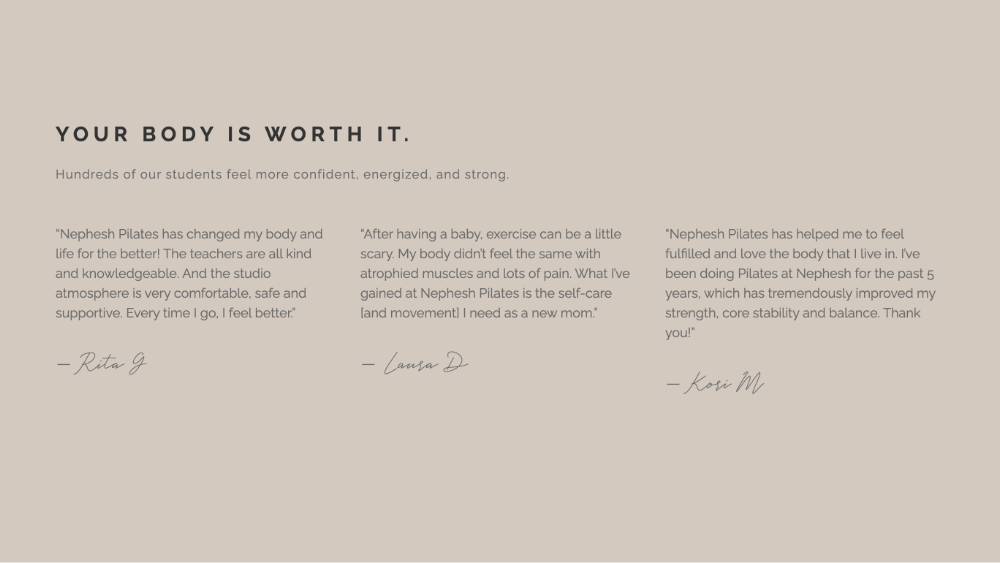
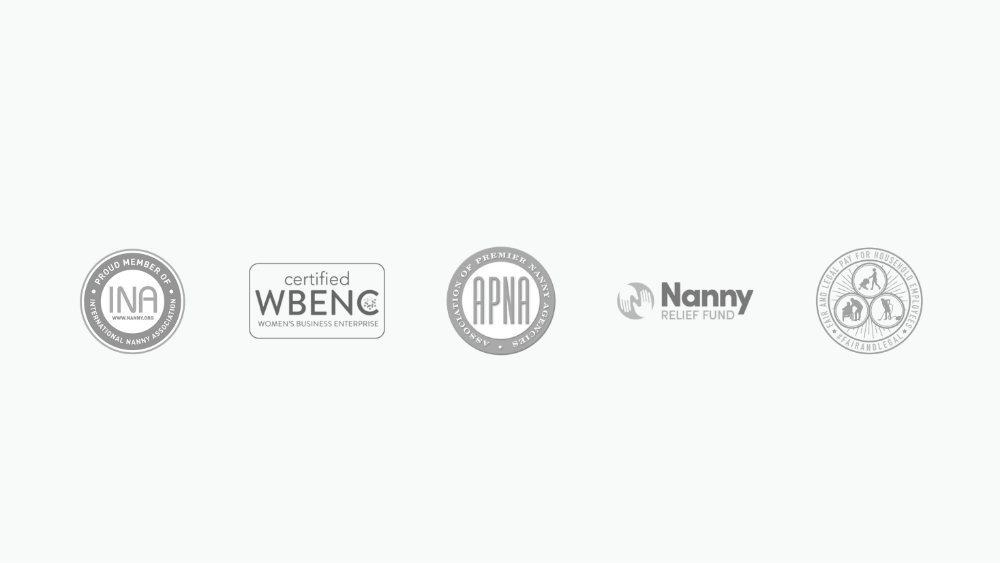

OPTIONAL STUFF
You’ve already covered the core purposes of your about page.
- Telling your customer why you got started outlines your motives and commitment.
- Proving your ability to solve problems shows your credibility.
The following sections ensure that you and your customer share a common goal and a way of thinking but they are not required.
MISSION STATEMENT
There are three kinds of problems facing your customer. Most of the time your website will address external and internal problems.
External
A physical, tangible problem that must be overcome.
Example: A website that keeps crashing.
Internal
The inner turmoil that’s brought about by the external problem.
Example: Having to constantly fix my website is stressing me out.
Your mission statement is where you can talk about something bigger than just internal and external problems.
Philosophical
Problems that are an injustice.
Example: Life is stressful enough. Nobody should have to deal with a website that keeps breaking for no reason.
If your customer agrees with your mission, they will become a fan of your brand and work with you to bring about the change they want to see in the world.
“We build clean, organized, and problem-free websites because nobody should have to feel stressed out over a site that keeps breaking down for no reason.”
CORE VALUES
Just like the mission statement, your core values are an opportunity to connect with your customer on something bigger than internal and external problems.
If you embody values that your customer respects, they won’t have reservations about supporting you.
TEAM
If you stand behind your work, you’ll put your name on it. So include names and pictures of your team members.
When customers see the people behind the scenes, it begins a trusting relationship between you and them and says you’re not just some faceless operation that’ll take their money and leave.
If your employees have bios, be sure they focus on how that employee solves problems for your customer. Again, that’s the whole reason your visitor is on your site.
EXAMPLES
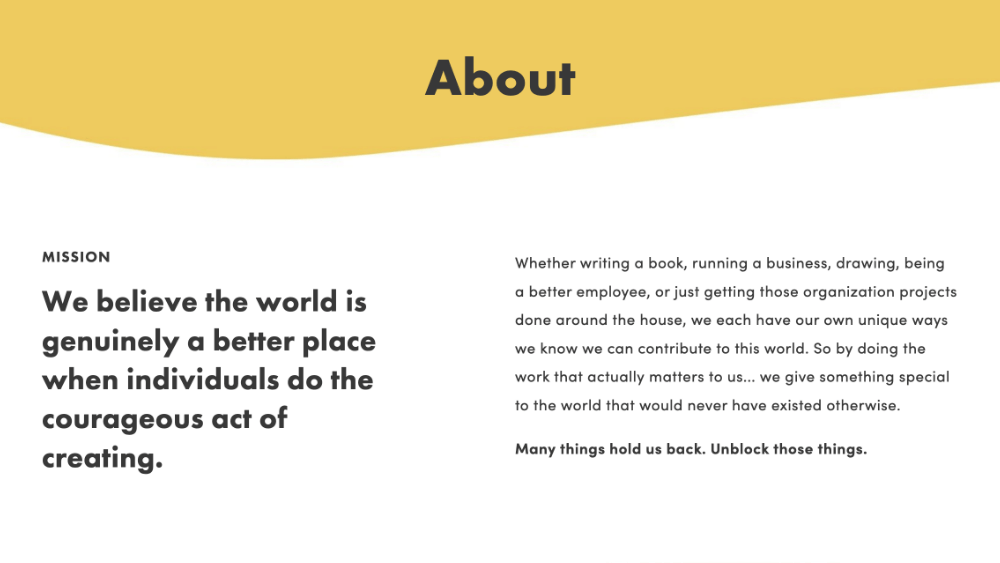
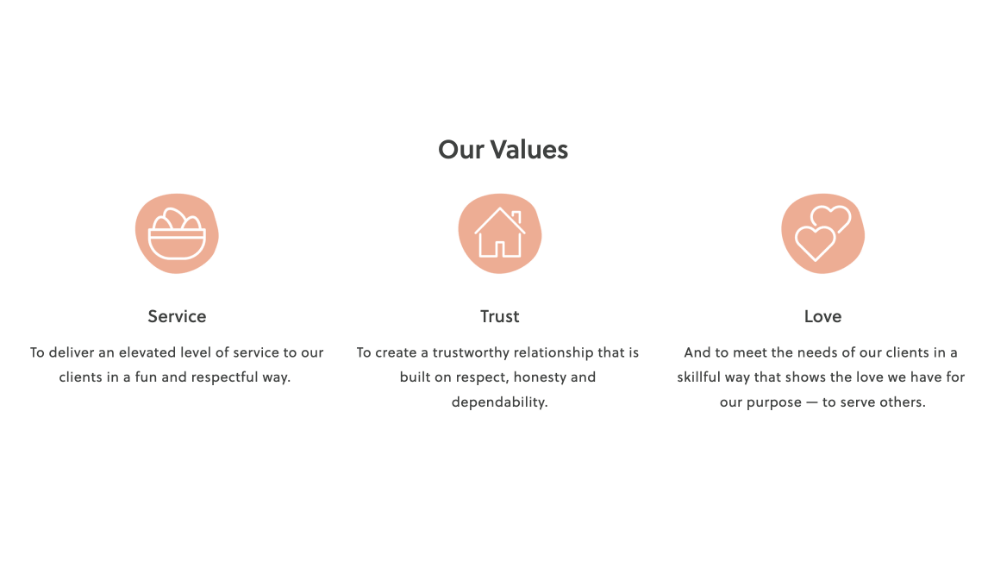

THAT’S EVERYTHING!
People go to websites because they’re seeking a solution to a problem, not to read a lengthy historical account of how you got started.
If you include the things outlined in this blog post on your about page, your customer will know that you’re a real person they can trust to solve their problems.

